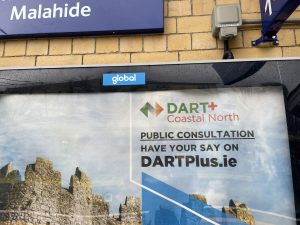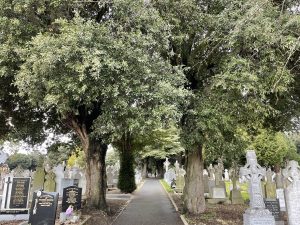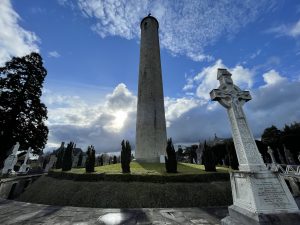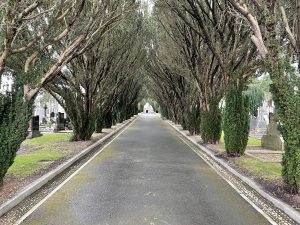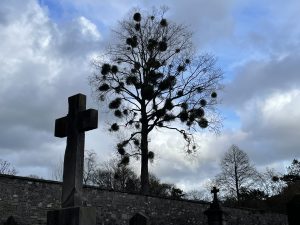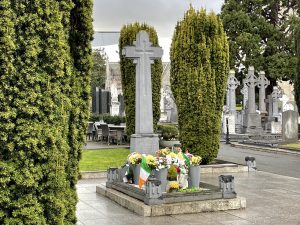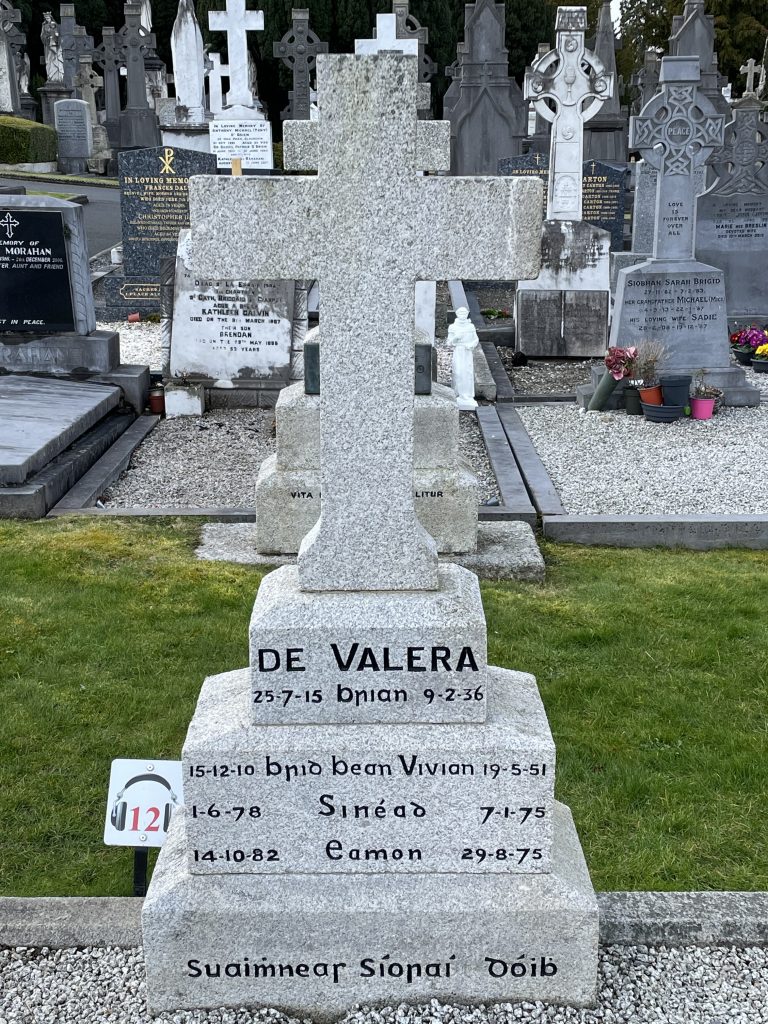Ireland day 0164. Friday 11 March 2022- Glasnevin
| Today’s summary | Met up with a former colleague and his wife in Fegans 1924 café for lunch then walked through town to Trinity College. Went our separate ways there and I took bus up to Glasnevin cemetery | ||||
| Today’s weather | Heavy rain in the morning, some sun among the showers in the afternoon. Not so windy. About 8C | ||||
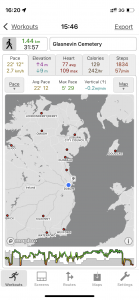 |
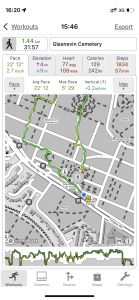 |
||||
| Today’s overview location (The blue mark shows the location of our route) |
Close-up location (The green line shows where we walked) (Click button below to download GPX of today’s walk as recorded, or see interactive map at bottom with elevations corrected): Glasnevin |
||||
Commentary
All days, when you think about it, are days of many parts. But today seemed to be a bit more so than most.
I started off by dealing with yet more car-related issues. Many of the motorways in Ireland are toll-roads and I wanted to get an e-tag account so I could drive through the e-toll lanes without having to stop and pay. Obviously, it wasn’t so simple as it should be as the car licence plate was already registered to another account – presumably the previous owner’s – so I had to sort that out.
Then I had a slightly trainspotterish moment when I decided to start researching the “DARTPlus” rail electrification proposal. As this will affect the line running through Malahide to Drogheda, I thought I ought to have a look. So I downloaded the public consultation documents from the website but quickly realised that there was probably a whole day’s worth of enjoyable reading in there, and I ran out of time. But I will definitely return to it and – if I have anything useful to add (unlikely!) I will submit a formal response.
By this time, it was time to jump on the DART – appropriate really – and head in to Dublin. A friend who I used to work with many years ago was visiting Dublin today with his wife, and we had arranged to meet for lunch. We went to my rapidly-becoming-favourite-café at Fegan’s, behind the Four Courts, and had an extremely enjoyable catch up. They are living in France at the moment and it was interesting to compare and contrast the Irish and French trials and tribulations of moving overseas – and there were more similarities than differences. They seem to be having an even more tortuous time with their car than we are, which was heartening in a disheartening sort of way.
After lunch, by which time the rain which had drenched the morning had stopped, we wandered back through the city centre to Trinity College, by way of the Irish Film Institute, the Temple Bar and the Books Upstairs shop. At that point we said our farewells (though we might meet again on Monday) as they wanted to have a look at the Book of Kells and I had decided to take the bus down to Glasnevin.
In a rather macabre sort of way, the cemetery at Glasnevin is one of Dublin’s most popular visitor destinations – a bit like Brompton and Highgate cemeteries in London. It’s something of a shrine to those who have died – often in brutal circumstances – in the cause of Irish nationalism since it was opened in 1832. But as well as the hundreds of visible gravestones, shockingly some 800,000 Irish people who died in the Famine and subsequent cholera epidemic are buried there too, in unmarked mass graves. It can make for a bit of an uncomfortable visit, especially for people like me from the UK.
Nevertheless, it’s an interesting place. Somehow it didn’t seem to suffer from the same air of sepulchural decay that besets Highgate and Brompton – it was well cared for, there were lots of flowers, and all around was the buzz of the city. It all combined in the weirdest possible way to make it feel more like a celebration of life than a lament for death. Perhaps most oddly of all, there’s a cheerfully-staffed café in the corner, with the radio blaring out heavy metal music – which seemed oddly to enhance the atmosphere rather than shatter it.
I only spent a couple of hours there, but would like to return when Val’s back so we can have a better look around. If nothing else the climb to the top of the O’Connell tower should be worthwhile, as the views from the top must surely be spectacular.
By that point it looked like it was about to rain again, so I hopped on the bus back to Tara Street and quickly found myself back in Malahide. So that was my day of many parts completed – car paperwork, a railway expansion plan, lunch with a former colleague from a time and a place afar, and a tour of a cemetery. Not the sort of day I would ever contemplate having back in the UK but since we came to Ireland and started expanding our horizons a bit it felt – well – normal!
Today’s photos (click to enlarge)
Interactive map
(Elevations corrected at GPS Visualizer: Assign DEM elevation data to coordinates )
Max elevation: 35 m
Min elevation: 23 m
Total climbing: 28 m
Total descent: -29 m
Total time: 00:31:58

